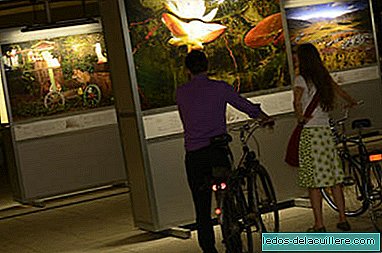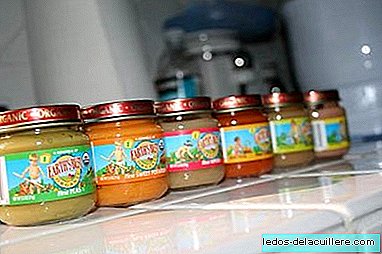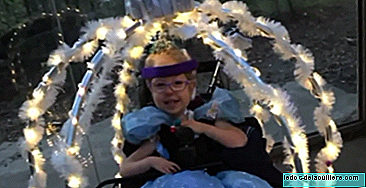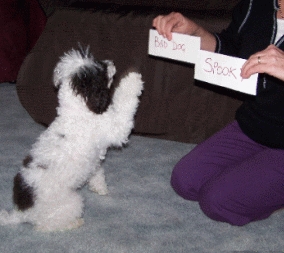Reading the time is something we do every day and at different times of our day. It is definitely a basic skill that we all need to learn from an early age, because it helps us to better manage our times and thus be more organized people.
However, learning to read the time can be a bit complicated for children. Therefore, today we share five tricks to teach children time.
Basics to learn to read the time
In order to start teaching a child time, you must first have certain basic concepts about numbers. For example, Children should know how to count from 1 to 60. In this way, we can explain that the day has 24 hours, that one hour has 60 minutes, that half an hour is 30 minutes, a quarter of an hour is 15 minutes and that one minute has 60 seconds.
Another basic that you should know is count five by five (5, 10, 15, 20, etc.) so that they can read the minutes correctly on an analog clock. And now that we talk about types of watches, it is advisable to start by teaching them to read an analogue (that is, hands) and then a digital one, so that they can know better how time is divided.
In addition to these basic notions about numbers, we must explain to children the times or periods in which the day is divided: morning, noon, afternoon and evening. One way to help them understand the differences between each one, is to relate certain activities that they do: in the morning we get up, at noon we have tea, during the afternoon we spend time with the family and at night we fall asleep, to name a few examples.
Tricks to teach the time
Learning to read the time can be a bit complicated for children, since the concept of time and the way in which hours and minutes are divided can be difficult to understand. Of course, we do not want this basic tool for daily life to become an unpleasant experience, so we share some tricks that will facilitate the teaching of time to children.
Make it something fun
A great way to teach children is through play or making the learning experience fun for them. Children by nature are curious and from an early age it is possible that this curious object called clock attracts your attention.
Taking advantage of that moment, you can start talking about time, relating it to the activities we mentioned in the basics section. Tell him enthusiastically how the day is divided into hours, motivating him to learn more about time and explaining that the clock helps us know at what time or stage of the day we are.
Make your own watch
A fun and very useful way to show them the time is to make your own clock. They can do it with a cardboard plate, cardboard for the hands, markers to write the numbers and an individual fastener or bookbinder to hold the hands.
Teaching how to tell the time I used these on placement as the school didnt have many clocks for children to use, so I got them to make their own. The children absolutely loved them and it allowed the lessons and topic to be fun and interactive Would definitely recommend #Teaching #TellingTheTime #Time #Clock #Primary #School. #TeachingMaths #Teacher #PrimaryTeacher #PrimarySchool
The children made their own clocks to help them tell the time - learning o'clock. We played our own version of "What's the time Mr. Wolf" whereby Mr Wolf shows the time on their clock when asked and the children have to read the time and take that many steps - incorporating reading time objective;)… #homeed #games #childhoodgames #maths #time #clock #earlylearning #nurseryathome #tellingthetime #oclock #earlymaths #eyfs # ks1 #mamateachesme #mamateacherlife #mrwolf #whatsthetimemrwolf #homeschooling #homeschoolfun #learningthroughplay
Tick, tock, tick, tock As a kid, I struggled a lot with the concept of time and it wasnt until I was 11 that I finally learnt how to read an analogue clock I love this idea and think it would have benefited me greatly on my journey I love that the little flaps reveal the 5 minute counting rule, the saving grace in my time telling journey I'd love to add sections about past and to onto this as well Definitely could be used well in a classroom. #teachersofinstagram #teachingmathematics #teachingtime #analogueclock #primaryeducation #mathematics #clockactivity #clockcraft #mathematicscenter #tellingthetime #makelearningfun
Another option is to make your own hand watch, so you can wear it during the day and learn the hours.
Is your child learning how to tell the time Why don't you get their creative ideas flowing by designing their own watches and get them practicing. Check out these watches below Amazing aren't they #tellingthetime #maths #education #parentseducation #learningisfun #becreative
By making their own clock, children will learn from the beginning where each number goes, have fun doing it and find it more attractive and easy to get acquainted with it.
Use a color code
One way to help children identify the minutes on the clock, is using a system or color code. For example, they can point to a different color every hour, and explain at the same time, the five minute division that exists.
If your kids are struggling with telling time past the hour, teaching the hour space is a game changer I've put together some simple tricks and strategies that have really worked for me in a blog post along with three free games to try them out with your class Linked in my profile. httpsgoo.glRTBUjQ #iteachsecond #secongrade #instateachers #teachersofig #tellingtime #mathisfun #aroundthekampfire @teacherspayteachers
Another way to use the color system is to indicate when the times are similar or are divided into a particular time. For example, in this watch that we found on Instagram, we see how the same color is used to mark the hour and half an hour, and how in the case of the "quarter for" and "quarter" they also used the same color . The same in the case of past 10 minutes of the hour and in the previous 10 minutes.
WHATS THE TIME Today we explored an analogue clock. We discuss oclock, half past, quarter past and quarter to What an interesting discussion that proved to be. Very insightful into their prior knowledge. The students then LOVED making these clocks. Thank you @stayclassyclassrooms for your brilliant resource #Maths #tellingthetime #discussiontime #cutandpaste #handson #happyandengagedkids
Include hours and minutes clearly
Reading the minutes can be complicated to memorize, but one way to help understand it, It is indicating the minutes to which each number corresponds on the outside of the clock. We can do this with a clock that we already have at home, to which we will only add the minutes with cardboard or paper.
I took my clock off the wall MONTHS ago because the battery died and was too lazy to put it back up now that the last quarter is here and well be learning time, I threw on these adorable free time telling helpers from Dr Hs Classroom on TPT Do you have time telling helpers on your clock… #tellingtime #teachingtime #clocknumbers
This technique also works perfectly with the hands, because we can explain that the shortest one indicates the hour, which are the numbers that are inside, while that of the minutes is longer and indicates the ones that are more away.
It includes your activities of the day
Another trick for children to become familiar with the hours, is include your daily activities inside the clock, so that they can begin to associate the moments and times of the day with the routine they perform each day.
The clock is done Hoping this helps the girls and I stay on track as we start school next week So far it's working great and the girls love knowing what time it is #homeschool #schedule #timemanagement #scheduleclock
A nice and practical idea to help our children with the fulfillment of their routines, especially when they are in the stage of asking a thousand times "how much is missing" because they still do not know how to read the time on the clock #routine #relojinfantil #kiwicrate #idea #toddler #scheduleclock
In addition to helping to recognize the hours and identify the times when each one arrives, it will help them establish and comply with their daily routines and activities.
What do you think about these tricks to teach children time? Are there any you have tried?












